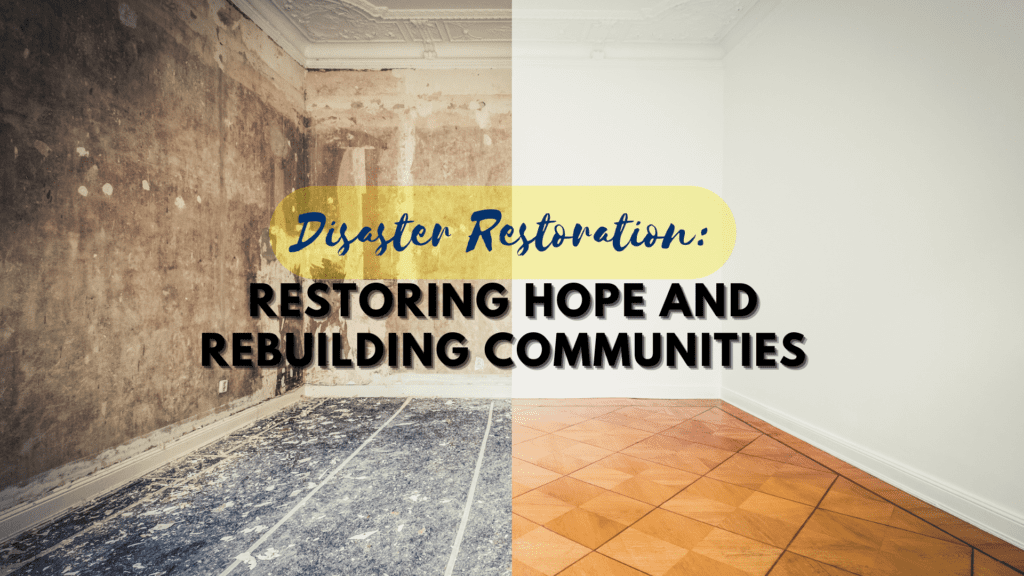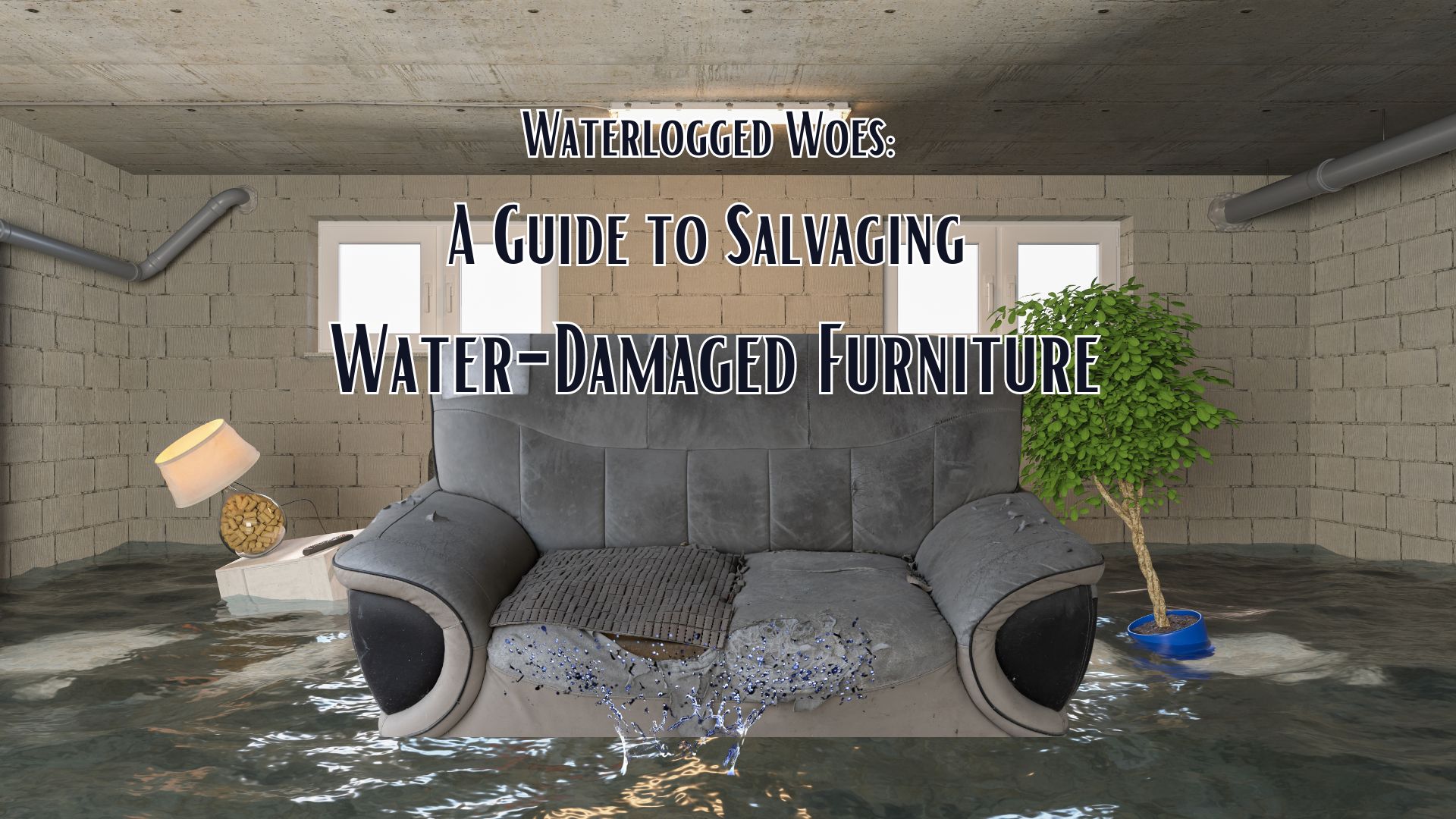Communities frequently encounter devastation and loss when confronted with natural disasters. From hurricanes and wildfires to floods and earthquakes, the aftermath of these events can be overwhelming and leave long-lasting effects on both individuals and their surroundings. However, amidst the chaos and despair, there is a glimmer of hope—disaster restoration.
In this blog post, we will explore the significance of disaster restoration, its key components, and the path to rebuilding and revitalizing communities in the wake of disaster.
Understanding Disaster Restoration
Disaster restoration refers to the comprehensive process of repairing, rebuilding, and renewing areas affected by catastrophic events. It encompasses various aspects, including physical infrastructure restoration, psychological recovery, environmental rehabilitation, and social and economic revitalization. The goal is not just to recover what was lost but also to create a more resilient and prepared community for the future.
- Physical Infrastructure Restoration
Restoring damaged buildings, roads, bridges, and utilities is vital for reestablishing stability in affected areas. It encompasses a series of crucial steps, including assessing the extent of damage, developing comprehensive reconstruction plans, and mobilizing skilled professionals and construction teams to execute the necessary repairs. The primary objective is to restore essential infrastructure, guaranteeing compliance with current safety standards and taking into account potential future risks.
- Environmental Rehabilitation
Natural disasters can cause significant environmental impacts, including erosion, contamination, and loss of biodiversity. To preserve the environment and reduce future risks, it is essential to restore ecosystems, engage in reforestation efforts, and adopt sustainable practices. Initiatives such as wetland restoration, watershed management, and land rehabilitation play a crucial role in restoring the natural balance and safeguarding against future disasters.
- Psychological Recovery
Disasters take a toll on people’s mental well-being. Helping individuals cope with trauma, grief, and anxiety requires essential emotional support, counseling services, and community programs. Rebuilding a sense of community and providing mental health resources play a significant role in the restoration process. Creating safe spaces for sharing experiences, organizing support groups, and promoting resilience-focused activities can aid in the psychological recovery of affected individuals.
- Social and Economic Revitalization
Disaster-stricken communities often face economic setbacks, with businesses shutting down and employment opportunities diminishing. Promoting local entrepreneurship, attracting investments, and creating job opportunities can help revitalize the economy and enable communities to regain their self-sufficiency. This may involve providing financial assistance, offering grants and incentives to businesses, and supporting community-led initiatives for economic growth.
The Path to Disaster Restoration
- Preparedness and Resilience
Investing in disaster preparedness measures before a catastrophe strikes is crucial. Developing early warning systems, emergency response plans, and educating the community on evacuation procedures can significantly reduce the impact of future disasters. Preparedness efforts should also include building codes and regulations that account for potential hazards, conducting vulnerability assessments, and implementing risk reduction strategies.
- Swift Emergency Response
A prompt and efficient emergency response is essential for minimizing loss of life and further damage. Collaborative efforts between government agencies, NGOs, and volunteers play a pivotal role in providing immediate assistance, distributing resources, and coordinating rescue operations. Establishing effective communication channels, pre-arranged agreements between different response organizations, and conducting regular drills and exercises contribute to a more coordinated emergency response.
- Assessment and Planning
After the initial emergency response, a comprehensive assessment of the damage is necessary. Expert teams evaluate the extent of destruction, determine priorities, and develop a restoration plan tailored to the community’s specific needs. This involves conducting damage assessments, engaging with stakeholders, and considering long-term sustainability factors. The restoration plan should address short-term and long-term goals, resource allocation, and community involvement, ensuring that it aligns with the overall vision for recovery.
- Collaboration and Community Engagement
Successful disaster restoration relies on the collaboration and active participation of all stakeholders. Engaging the affected community, involving local organizations, and coordinating efforts with government agencies and NGOs foster a sense of ownership and ensure a more inclusive and sustainable restoration process.
Community engagement can be achieved through town hall meetings, workshops, and participatory decision-making processes that incorporate local knowledge and perspectives. Collaboration also includes leveraging the expertise of academia, private sector partners, and international organizations to enhance the effectiveness of restoration efforts.
- Long-Term Sustainability
Integrating sustainability principles into the restoration process is crucial for building resilience against future disasters. This includes adopting eco-friendly construction practices, implementing renewable energy solutions, and promoting climate-conscious policies. Incorporating green infrastructure, such as permeable pavements and rainwater harvesting systems, can mitigate flooding risks. Additionally, educating communities on sustainable practices, promoting resource conservation, and raising awareness about climate change are vital for creating a resilient future.
Overcoming Challenges and Ensuring Success
While the path to disaster restoration is filled with hope, it is not without challenges. Some of the common obstacles include limited resources, bureaucratic hurdles, political complexities, and competing priorities. Overcoming these challenges requires strong leadership, effective coordination, and adaptive strategies. It is crucial to establish clear lines of communication, streamline decision-making processes, and leverage technology for efficient data collection and analysis.
Ensuring success in disaster restoration also requires a holistic approach that goes beyond physical reconstruction. It entails addressing the social, economic, and environmental aspects of a community’s well-being. Some key considerations include:
- Community Empowerment
Empowering the affected community by involving them in the decision-making process, offering training and capacity-building programs, and promoting inclusive governance models are vital for ensuring the long-term success of restoration efforts. This approach not only fosters a sense of ownership but also taps into the community’s knowledge, expertise, and resilience.
- Knowledge Sharing and Learning
Disaster restoration is a continuous learning process. It is essential to document and share lessons learned from past experiences to improve future response and recovery efforts. Encouraging collaboration between different regions and organizations, investing in research and development, and disseminating best practices and innovative solutions contribute to a collective knowledge base that benefits communities worldwide.
- Policy and Legislative Support
Effective disaster restoration requires supportive policies and legislation at local, national, and international levels. Governments play a critical role in creating an enabling environment by enacting laws that promote disaster risk reduction, sustainable development, and the integration of climate change adaptation measures. Policy coherence, coordination among different sectors, and adequate resource allocation are crucial for implementing and enforcing these regulations.
- Monitoring and Evaluation
Regular monitoring and evaluation are essential to track progress, identify gaps, and make necessary adjustments during the restoration process. Establishing performance indicators, conducting impact assessments, and soliciting feedback from the community help measure the effectiveness of restoration initiatives. This information enables stakeholders to fine-tune strategies, allocate resources effectively, and ensure accountability in the restoration process.
Superior Restoration: Partnering for Effective Disaster Recovery
In the journey of disaster restoration, it is essential to collaborate with experienced and reliable professionals who can provide the expertise and support needed to navigate the complex process of recovery. One such organization that can play a crucial role in the restoration efforts is Superior Restoration. With their extensive knowledge and specialized services, they can contribute significantly to rebuilding communities and restoring hope.
Superior Restoration is renowned for its expertise in disaster recovery and restoration services. Their team of skilled professionals understands the unique challenges faced by communities in the aftermath of disasters and possesses the necessary skills and resources to address them effectively. Whether it’s restoring damaged infrastructure, mitigating environmental impact, or supporting psychological recovery, Superior Restoration is committed to delivering comprehensive solutions.
By partnering with Superior Restoration, communities can benefit from their extensive experience, specialized services, and commitment to excellence. Their comprehensive approach to disaster restoration aligns with the goal of rebuilding communities, restoring hope, and creating a better future.
Open to serve you 24/7. Contact us today for your disaster restoration needs.





